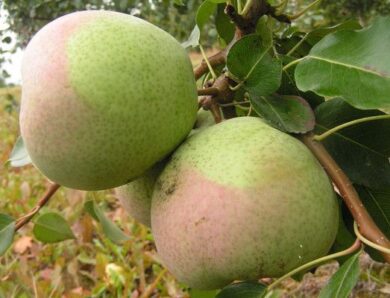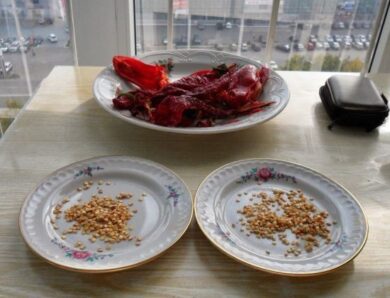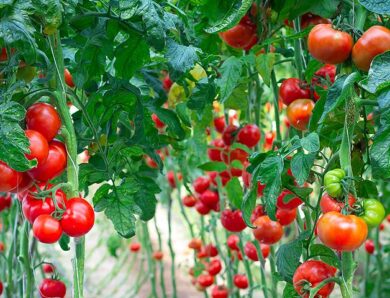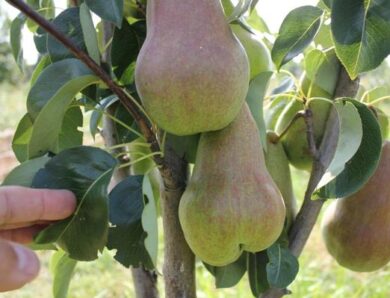Diseases of pear: blackened leaves and fruits on the tree
An experienced gardener knows, that you can get a rich harvest only with constant care and care of plants. Such obstacles often arise along the way, as a disease. If the leaves on the pear turn black, the necessary measures should be taken immediately, otherwise the damage to the tree may be irreparable. What to do, to protect your harvest? Which causes the pear leaves to turn black and curl? The answers to these questions await you below.
The main reasons
Darkening of pear leaves is a situation, which can stun novice gardeners. The point is, that this disease can have different causes. Before you start treating trees, need to understand, which caused the problem in your case.
Mistakes in care
Often the cause of discoloration and deformation of the leaves can be deficiencies in the care of the tree. With insufficient supply of nutrients, even the branches can take an unnatural shape, why the pear will lag behind in development and lose its healthy appearance.
If the color of the leaves changes starting from the edges of the leaf blade, going to the top, means, the tree lacks calcium. Water the pear, every second time fertilize it with calcium nitrate, to restore normalcy.
Boron deficiency is reflected by the slow deformation of young seedlings. The disease in this case is eliminated by watering with boric acid. This helps to replenish micronutrient deficiencies in a timely manner and restore the tree's immunity.
The pear leaf is also twisted due to dry air. If the humidity in your area is low, green mass may lose its usual appearance due to constant heat. In this case, drip irrigation will help. There is no way to do it? Then you can sprinkle the garden twice a day.
Invasion of insects
Black spots on pear leaves are often the result of parasites. The most common pathogen in this case is the aphid. Small insects feed on wood, from which the leaves of the pear curl into a tube and turn black.
Copper is a winged insect with a dark body color, which feeds mainly on young leaves. This deforms the branches, makes flowers crumble. The larvae of parasites leave behind a sticky mass, on which sooty fungus multiplies.
Pear gall mite - a pest, which is not so easy to find. The parasite hides in the buds of trees, and with the onset of heat comes out, covering young leaves with black dots.
Scabies
A common fungal disease of fruit trees is scabies. It can strike like leaves, and shoots, flowers and fruits. What provokes her appearance:
- weather conditions. Too humid climate creates favorable conditions for the development of the disease;
- instability of the variety. Some pears (Forest beauty, Phelps et al. d.) more susceptible to this pest;
- age of the plant. Old-timers and young trees are at risk.
Fallen leaves are the place where scabies spores are preserved. In winter they are in it, therefore, it is strongly recommended to remove all fallen mass in the fall. The disease reaches the leaves through cracks in the bark. Propagated quickly and quite difficult to eliminate, therefore it is easier to carry out its prevention. This can be done by treating the trees with Bordeaux liquid in the spring.
Bacterial burns
Pear bacteriosis is one of the most dangerous diseases, which can completely destroy a tree without adequate treatment. Bacteria multiply in the vascular system of trees, getting to all corners of a plant. Signs of bacteriosis are:
- blackened leaves and branches (outwardly the blackening is like a trace of fire);
- necrosis of pear tissues;
- falling leaves, flowers and fruits.
The pest enters the plant through cracks in the bark and spreads through the vascular system. Gardeners themselves can spread it, using infected tools on healthy trees.
With this disease, pears turn black leaves and fruits, and the first signs of it can be seen around June. During this period, the characteristic brown color of the edges of the leaves appears. One of the causes of the disease may be an excess of fertilizers. There is also information about that, that late pears are also at risk, overloaded with fruit.
The most obvious manifestations of bacterial lesions can be seen during the heat. Then the leaves curl, blackened shoots. The tree is literally dying before our eyes.
Tree treatment
Having identified, why the pear folds and is covered with black dots of leaves, start treating the plant immediately. What and how to treat trees? Therapy depends on the specific disease.
Scabies, example, quite resistant to destruction. To overcome the fungus, you need to remove all the affected green mass. It needs to be cut and burned. It is best to do this in the fall.
Then treat the affected plants, to kill pest spores. In this case, you can use drugs "Speed", "Horus" "Agate-25K" and others. Bordeaux mixture will also be a good option. Do not forget, that the pear needs to be fertilized. An integrated approach will help get rid of the pest most effectively.
Bacterial lesions can be eliminated, cutting off the blackened parts of plants. A solution of copper sulphate should be applied to the cut. Crohn's in this case is treated with one of the following antibiotics: rifampicin, streptomycin, gentamicin.
If the affected plants can not be saved by these methods, they are cut down and burned, to prevent the spread of the disease. Destroy all vegetation at a distance 3-5 m from the affected tree.
Prevention
Now you know, why the leaves in the pear turn black, and how to deal with it. It should be noted, which is the easiest tree disease not to treat, and warn.
Prevention can be carried out by means of such actions:
- seasonal pruning of the crown;
- providing enough space for each plant to grow;
- fertilizing trees with mineral fertilizers.
These simple processes will help keep the garden healthy and provide you with a rich harvest.
Video "Leaves turn black in a pear"
In this video you will learn about it, how to treat a pear, in which the leaves turn black.




